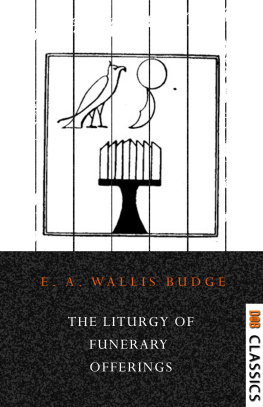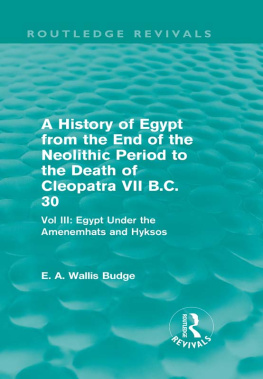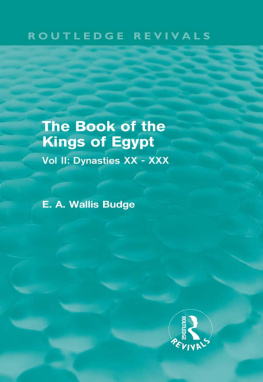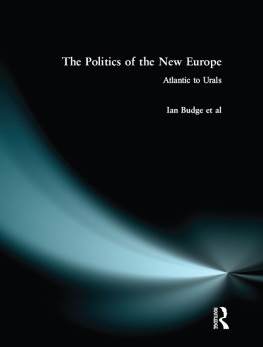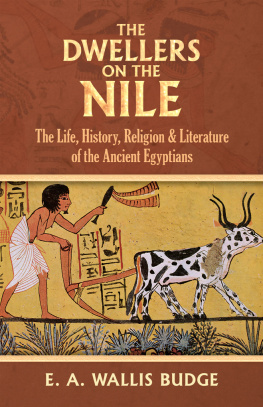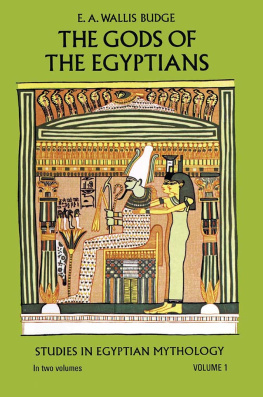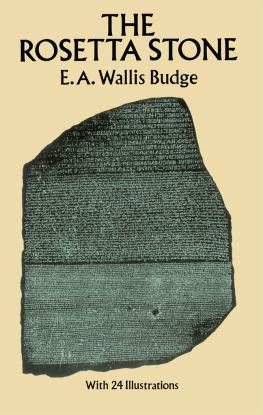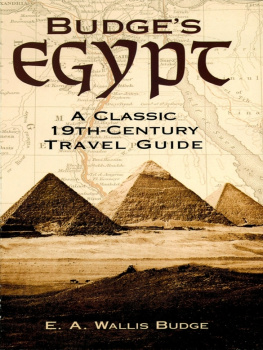E.A.W. Budge - Kebra Nagast
Here you can read online E.A.W. Budge - Kebra Nagast full text of the book (entire story) in english for free. Download pdf and epub, get meaning, cover and reviews about this ebook. genre: Art. Description of the work, (preface) as well as reviews are available. Best literature library LitArk.com created for fans of good reading and offers a wide selection of genres:
Romance novel
Science fiction
Adventure
Detective
Science
History
Home and family
Prose
Art
Politics
Computer
Non-fiction
Religion
Business
Children
Humor
Choose a favorite category and find really read worthwhile books. Enjoy immersion in the world of imagination, feel the emotions of the characters or learn something new for yourself, make an fascinating discovery.
Kebra Nagast: summary, description and annotation
We offer to read an annotation, description, summary or preface (depends on what the author of the book "Kebra Nagast" wrote himself). If you haven't found the necessary information about the book — write in the comments, we will try to find it.
Kebra Nagast — read online for free the complete book (whole text) full work
Below is the text of the book, divided by pages. System saving the place of the last page read, allows you to conveniently read the book "Kebra Nagast" online for free, without having to search again every time where you left off. Put a bookmark, and you can go to the page where you finished reading at any time.
Font size:
Interval:
Bookmark:
The Kebra Nagast, by E.A.W. Budge, [1922], at sacred-texts.com
THE QUEEN of SHEBA & her only SON MENYELEK
BEING THE HISTORY of the DEPARTURE OF GOD & HIS ARK of THE COVENANT FROM JERUSALEM TO ETHIOPIA, AND THE ESTABLISHMENT of THE RELIGION OF THE HEBREWS & THE SOLOMONIC LINE OF KINGS IN THAT COUNTRY. A COMPLETE TRANSLATION of the KEBRA NAGAST WITH INTRODUCTION BY SIR E. A. WALLIS BUDGE, M.A., LITT.D., D.LITT., LIT.D., F.S.A., SOMETIME SCHOLAR OF CHRISTS COLLEGE, CAMBRIDGE, AND TYRWHITT HEBREW SCHOLAR. KEEPER OF THE DEPARTMENT OF EGYPTIAN AND ASSYRIAN ANTIQUITIES IN THE BRITISH MUSEUM.
NOW FIRST PUBLISHED WITH 31 ILLUSTRATIONS FROM ETHIOPIC MSS. IN THE BRITISH MUSEUM BY THE MEDICI SOCIETY, LIMITED, LONDON, LIVERPOOL, AND BOSTON, MASS., MCMXXII.
[1922]
Scanned, proofed and formatted at sacred-texts.com, April 2010, by John Bruno Hare. This text is in the public domain in the US because it was published prior to 1923.
Click to enlarge
Title Page
Click to enlarge
Verso
Click to enlarge
Frontispiece
[p. ii] [p. iii] [p. iv] [p. v] [p. vi]
The Kebra Nagast, by E.A.W. Budge, [1922], at sacred-texts.com
THIS volume contains a complete English translation of the famous Ethiopian work, The KEBRA NAGAST, i.e. the Glory of the Kings [of Ethiopia]. This work has been held in peculiar honour in Abyssinia for several centuries, and throughout that country it has been, and still is, venerated by the people as containing the final proof of their descent from the Hebrew Patriarchs, and of the kinship of their kings of the Solomonic line with Christ, the Son of God. The importance of the book, both for the kings and the people of Abyssinia, is clearly shown by the letter that King John of Ethiopia wrote to the late Lord Granville in August, 1872. The king says: There is a book called Kivera Negust which contains the Law of the whole of Ethiopia, and the names of the Shums [i.e. Chiefs], and Churches, and Provinces are in this book. I pray you find out who has got this book, and send it to me, for in my country my people will not obey my orders without it. (See infra, .) The first summary of the contents of the KEBRA NAGAST was published by Bruce as far back as 1813, but little interest was roused by his somewhat bald precis. And, in spite of the labours of Praetorius, Bezold, and Hugues le Roux, the contents of the work are still practically unknown to the general reader in England. It is hoped that the translation given in the following pages will be of use to those who have not the time or opportunity for perusing the Ethiopic original.
The KEBRA NAGAST is a great storehouse of legends and traditions, some historical and some of a purely folk-lore
character, derived from the Old Testament and the later Rabbinic writings, and from Egyptian (both pagan and Christian), Arabian, and Ethiopian sources. Of the early history of the compilation and its maker, and of its subsequent editors we know nothing, but the principal groundwork of its earliest form was the traditions that were current in Syria, Palestine, Arabia, and Egypt during the first four centuries of the Christian era. Weighing carefully all that has been written by Dillmann, Trump, Zotenberg, Wright, and Bezold, and taking into account the probabilities of the matter, it seems to me that we shall not be far wrong if we assign the composition of the earliest form of the KEBRA NAGAST to the sixth century A.D. Its compiler was probably a Coptic priest, for the books he used were writings that were accepted by the Coptic Church. Whether he lived in Egypt, or in Aksum, or in some other part of Ethiopia matters little, but the colophons of the extant Ethiopic MSS. of the KEBRA NAGAST suggest that he wrote in Coptic.
In the succeeding centuries, probably as a result of the widespread conquests of Muhammad and his Khalifahs, the Coptic text was in whole or part translated into Arabic, and during the process of translation many additions were made to it, chiefly from Arabic sources. Last of all this Arabic version was translated into Ethiopic, and proper names underwent curious transformations in the process. According to the colophons of the MSS. in the British Museum, Oxford, and Paris, the Arabic translation was made from the Coptic in the 409th year of mercy, when Gabra Maskal, commonly known as Lalibala, was reigning over Ethiopia, i.e. between A.D. 1314 and 1344. And the same authorities say that the Ethiopic translation was made subsequently by one Isaac, of whom nothing is known save that he was an enthusiastic Christian visionary and patriot. His
knowledge of history and chronology was defective, and his comparative philology is unusually peculiar, even for the period in which he lived.
In the colophons Isaac says: I have toiled much for the glory of the kingdom of Ethiopia, and for the going forth (manifestation?) of the heavenly Zion, and for the glory of the King of Ethiopia. These word, throw some light upon Isaacs motive in translating the book, and supply the reason for his devoted labour. He firmly believed: 1. That the lawful kings of Ethiopia were descended from Solomon, King of Israel. 2. That the Tabernacle of the Law of God, i.e. the Ark of the Covenant, had been brought from Jerusalem to Aksum by Menyelek, Solomons firstborn son, according to the Ethiopians. 3. That the God of Israel had transferred His place of abode on earth from Jerusalem to Aksum (Aksum), the ecclesiastical and political capital of Ethiopia. The means employed by Menyelek for obtaining possession of the Ark of the Covenant did not disturb Isaacs conscience in the least, nay he gloried in them, for manifestly Menyelek was performing the Will of God in removing the tabernacle of Zion from Jerusalem. God, according to Isaac, was satisfied that the Jews were unworthy to be custodians of the Ark wherein His Presence was, and the Ark wished to depart. Ethiopia had stretched out her hands to God (Psalm lxviii, 31), and He went to her, with the Ark, to preside over Menyeleks kingdom, which was established in accordance with the commands that He had given to Moses and the prophets and priests of Israel.
It will be remembered that the line of kings founded by Solomon continued to reign even after the Ethiopians became Christians under the teaching of Frumentius and Adesius, the slaves of the merchant Meropius, and that the line continued unbroken until the tenth century of our era. Isaac knew that God then permitted
the line to be broken, and allowed the Zague kings to reign over Ethiopia until the reign of Yekuno Amlak, who restored the Solomonic line in 1270, and he makes no attempt to justify Gods action in this matter, or to explain it. We learn, however, from the first section of the colophon, that he wondered why God had neglected to have the Arabic version of the KEBRA NAGAST translated into the speech of Abyssinia at an earlier date, and why Abul-Izz and Abul-Faraj, who made the Arabic translation from the Coptic, did not make a rendering into Ethiopic also. In the explanation which he attempts to give, he reminds us that the Arabic translation appeared whilst the Zague kings were still reigning. As the KEBRA NAGAST was written to glorify the Solomonic line of kings, and its editors and translators regarded the Zague kings not only as non-Israelites, but as transgressors of the Law, the appearance of a translation of it in the vernacular whilst the Zague were still on the throne would be followed by the torture and death of its producers, and the destruction of their work.
There is extant in Ethiopian literature a legend to the effect that when God made Adam He placed in his body a Pearl, which He intended should pass from it into the bodies of a series of holy men, one after the other, until the appointed time when it should enter the body of Hanna, [*1] and form the substance of her daughter the Virgin Mary. Now this Pearl passed through the body of Solomon, an ancestor of Christ, and Christ and Menyelek, the son of Solomon by the Queen of Sheba, were sons of Solomon, and according to Ethiopian ideas they were akin to each other. But Christ was the Son of God, and, therefore, being the kinsman of Christ, Menyelek was divine. And Isaac the Ethiopian, holding
Next pageFont size:
Interval:
Bookmark:
Similar books «Kebra Nagast»
Look at similar books to Kebra Nagast. We have selected literature similar in name and meaning in the hope of providing readers with more options to find new, interesting, not yet read works.
Discussion, reviews of the book Kebra Nagast and just readers' own opinions. Leave your comments, write what you think about the work, its meaning or the main characters. Specify what exactly you liked and what you didn't like, and why you think so.


